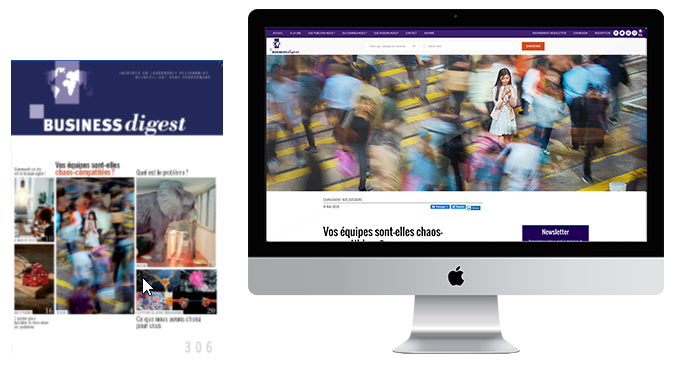How to deploy in the present AND prepare for the future
The emergence of the intensely disruptive «new barbarians»1 might have you feeling boxed in, caught between the need to consolidate your historical position and uncover new, more innovative drivers of growth. But what if, instead of having to choose between these two paths, you could follow them both at the same time? This is the challenge of dual transformation.
Imagine a world where all vehicles are autonomous, eliminating all traffic accidents: what would happen to insurance companies? Or a world where individual health is monitored from A-Z by connected objects: what would become of analytical laboratories? Or a world where professors upload their courses onto the internet for free: what would become of schools and universities? These types of transformations, which affect every sector of the economy, have been threatening leading market players for decades. Meanwhile, figures2 show that the life expectancy of companies is dropping: half of the firms currently featuring in the S&P 500 will have disappeared in 10 years. In addition to threats, however, these changes also off er incredible opportunities for reinvention. Businesses must fight off the repeated assaults of their bold new rivals while simultaneously preparing for the future. This is the dual transformation process modeled by Scott Anthony, Clark Gilbert and Mark Johnson from the US firm Innosight.
Transformation A: repositioning your current business model
The software publisher Adobe was in blossoming health back in 2007, boasting a portfolio of go-to products, including Photoshop, In- Design, Illustrator and Acrobat. Just one year later, however, the subprime crisis forced many companies to cut their spending, and sales of business software subsequently crumpled. At the same time, with the steep rise in mobile applications, a host of disruptive players began to offer cheaper solutions. Adobe’s turnover fell by 17%, and the company had to let 10% of its workforce go. Fast forward nearly 10 years to 2017, and Adobe sales have hit $6 billion, more than twice their 2009 level. How did the Californian company achieve such a dramatic turnaround? They made a bold strategic choice to break with their historical business model. In late 2011, Adobe decided to discontinue physical supports of its products, transfer its entire offering onto the cloud, and sell via renewable licenses. The decision decreased production and distribution costs; attracted steadier revenue; decreased attrition rates; and, above all, reduced Adobe’s exposure to piracy. In many ways, the company has not changed much. The software is the same as it was before and meets customer needs in the same way, but the way Adobe delivers that software has changed. This is the common thread for most type A transformations: finding new avenues to reach an existing market by rethinking modes of production, distribution or selling (and sometimes all three at the same time). In other words, executing a successful transformation requires understanding which aspects of your activities make you unique in the eyes of your customers.
Transformation B: building the engine for tomorrow’s growth
- New barbarians is a term used to describe economic players such as Uber, Airbnb and Tesla, whose innovative business models threaten large, well-established corporations. See in particular our dossier: “The Uberization of your business: threat or opportunity?” (Business Digest No. 260, October 2015).
- “Corporate Longevity: Turbulence Ahead for Large Organizations” (Innosight, 2016).
Excerpt from Business Digest n°279, September 2017
© Copyright Business Digest - All rights reserved

